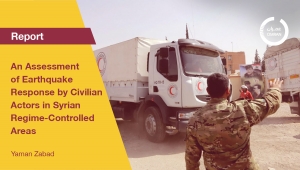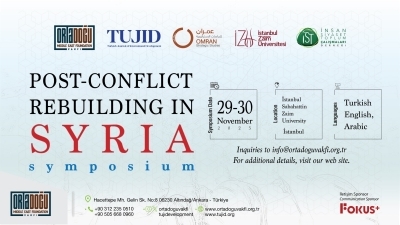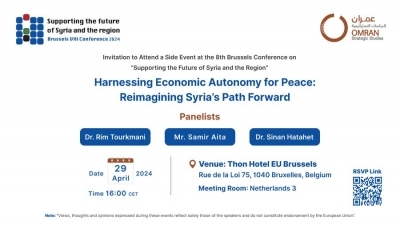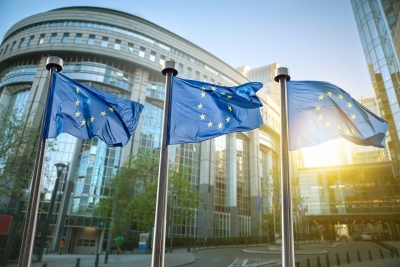Papers
An Assessment of Earthquake Response by Civilian Actors in Syrian Regime-Controlled Areas
Introduction
Following the devastating earthquake that struck cities in southern Turkey and northern Syria on February 6th, 2023, the civil society in Syria has mobilized in both areas. This included regions under the control of the Syrian regime as well as Northwest Syria, which is under the Opposition's control.
In previous years, the civil society in areas controlled by the Opposition has been responsible for addressing urgent needs arising from various crises, such as winter campaigns, post-shelling recovery efforts, and other emergencies. However, in areas under the Syrian regime's control, the concept of "Emergency Response" is a relatively new development.
The purpose of this paper is to examine the response by civil society organizations to the recent earthquake in areas under the Syrian regime's control. It will investigate the level of support provided by the regime, as well as the goals of civil society response. This will involve monitoring and assessing the activities of various institutions and categorizing them based on their seniority, the type of work they do, and their geographic coverage. Additionally, the study will better dissect the role of the "Syrian Trust for Development"(1) rthrough their response(2)
Other Fronts of The Syrian Trust for Development (STD)
The Syrian Trust for Development (STD) was established in 2007 to coordinate civil society efforts in Syria and promote them to the international community. Following the February 6, 2023 earthquake, the organization has sought to redefine its role both internally and externally, partnering with several external entities to support local initiatives and organizations.
Even though STD is overseen by Asma al-Assad, it was able to form partnerships with prominent organizations such as the Norwegian Refugee Council(3) . and UNESCO(4)but it has been unable to generate substantial income for the regime from humanitarian aid funding, as the grants provided by the United Nations did not exceed $6 million during the years 2016-2017-2018.(5).
Activating (STD) became increasingly necessary after 2019, when the Caesar sanctions and successive Western sanctions against Syrian regime officials created financial urgency, so STD tried to become a back door to critical financial needs reflected by the earthquake disaster based on the civil actors that were active in the areas controlled by the Syrian regime.
The entities that participated in the emergency response have been categorized into unions, licensed organizations, Syrian initiatives created in response to the disaster, non-Syrian organizations and initiatives, and organizations affiliated with STD. There were around 134 Syrian and non-Syrian civil entities involved in the emergency response, and this estimate does not include official or foreign government delegations that visited the Syrian regime or provided direct aid to regime airports.
As shown in Figure (1), more than 45% of the organizations (Syrian and foreign) that participated in the earthquake response are linked to (STD) through a partnership or affiliation(6).At the same time, a good number of volunteers were mobilized to respond without being fully regulated by the regime, like its behavior with some religious groups in Damascus between 2006 and 2009, in order to ease the burden of relief work on it after failing to meet the relief needs of the poor classes in the capital.(7)
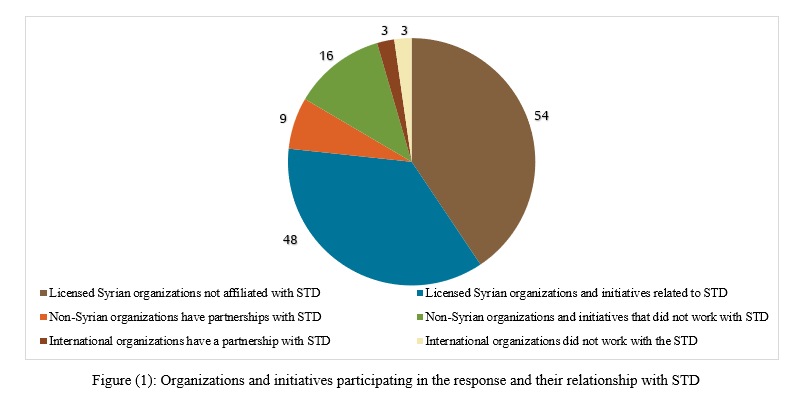
On the other hand, STD did not receive any direct support from international organizations or non-Syrian government support. Instead, STD collaborated with non-Syrian to provide aid. The organization also made efforts to publicize the delegations and international or civil aid they provided to earthquake victims(8) However, foreign organizations ignored STD on their media pages, Such as the Pakistani humanitarian organization and the Emirati Red Crescent.(9)
The Response and Its Quality
The earthquake struck several Syrian provinces, including Aleppo, Hama, Idlib, Tartous, and Latakia, with their countryside. The "Supreme Relief Committee" in the regime's government announced that:
- The number of affected families due to the earthquake reached 91,794.
- The number of buildings unsuitable for living reached 4,444 buildings, and 29,000 buildings can be used but require major reinforcements.
- The number of buildings suitable for use but need maintenance reached 30,000.
The number of buildings that got demolished due to their exposure to collapse reached 292., the number of deaths due to the earthquake reached 1,414 and 2,357 injuries.(10)
On March 3rd, 2023, the World Bank released a report estimating the material losses from the earthquake that struck four Syrian provinces at around 5.1 billion US dollars. However, Bashar al-Assad claimed that 50 billion US dollars were required to rehabilitate the affected areas (11) and that was a clear indication of the regime's exploitation of the earthquake disaster in order to benefit from the exemption from the US and Western sanctions relief that was issued after the earthquake.
During this period, civil society actors’ response to the earthquake varied in each province, as seen in Figure (2), which displays the number of organizations operating in each affected province under the control of the Syrian regime. Aleppo had 85 organizations, Latakia had 76, and Hama had 66. Most participating organizations in the emergency response were based in Damascus.
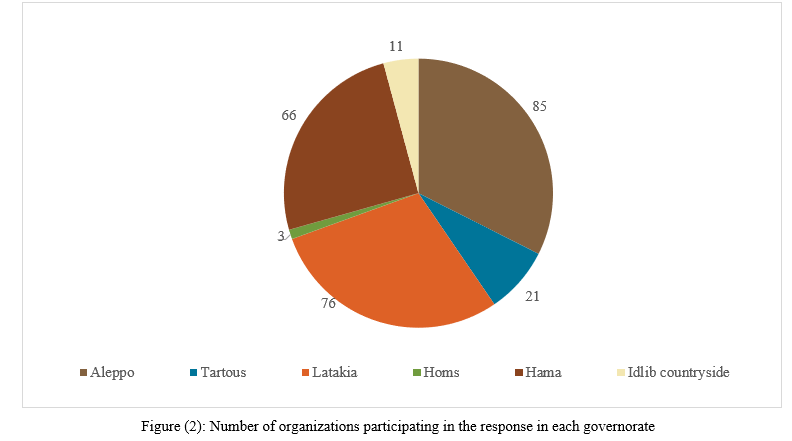
The entities engaged in the emergency response operate within different sectors, as shown in Figure (3), and many work in more than one sector. However, the variation in size of relief efforts delivere combined with the lack of ability to evaluate its volume due to the absence of reports from civil organizations about their work, number of beneficiaries, and selection mechanisms, is an indicator of weak transparency standards, making it impossible to assess the amount of aid provided and its impact.
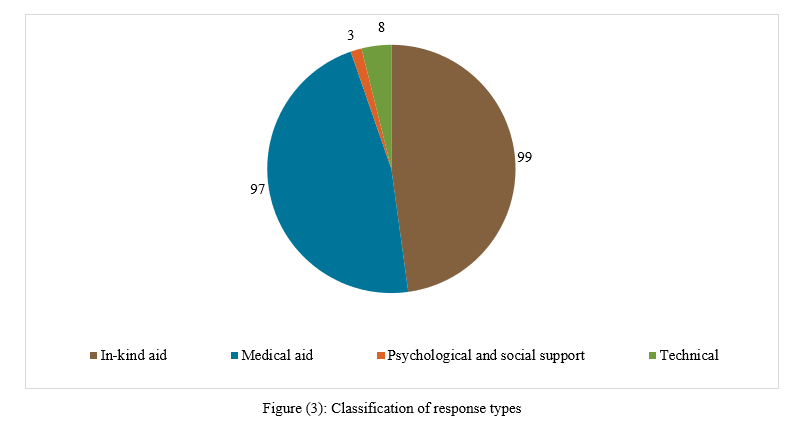
The Syrian regime aimed to promote the image of civil society in areas under its control in an attempt to create alternative operational mechanisms for its official institutions, which were subject to sanctions from US and/or EU, or for some of the companies that funded them and surfaced after the outbreak of the Syrian uprising.Figure (4) displays the establishment dates of organizations and initiatives that participated in the recent emergency response. “The number of organizations and initiatives founded after 2011 is twice that of those established since the Ba'ath party took power in 1963.”

Although civil society activities and areas of operations, seems to have expanded in areas controlled by the Syrian Regime, it has not been successful in establishing significant partnerships across different affected areas by the earthquake in Syria, for several reasons, such as:
- Systematic flaws in the laws regulating civil society organizations.
- The regime's security philosophy, which restricts and monitors the work of many organizations seeking to align themselves with STD.
Despite the challenges faced by civil society in areas under the control of the Syrian Regime, they have managed to establish a few limited partnerships, primarily through the efforts of STD.
Conclusion
In summary, there has been a notable increase in the number of civil society actors, both Syrian and non-Syrian, responding to the earthquake in areas controlled by the regime. However, there is a lack of accurate data regarding the extent of their work, funding, outcomes, and challenges. Additionally, most organizations have not published reports detailing their activities, which has led to skepticism about the authenticity of the media coverage.
While civil society engagement is crucial in responding to humanitarian crises, the regulatory framework governing civil action, coupled with the regime's security-focused approach, meant that civil actors’ engagement is constantly scrutinized. Furthermore, the lack of clear coordination and integration methods, oversight mechanisms, and transparency has played into the regime's hands, especially concerning the Syrian Trust for Development, which it views as a politically exploitable tool. Despite the regime's attempts to showcase the effectiveness of civil society organizations in its regions to attract international support, no such support has materialized yet.
([1]) The Syrian Trust for Development (STD) is a non-profit organization based in Damascus, Syria. It was established in 2007 and is owned by Asma al-Assad. The stated goal of its founding was to promote sustainable development in Syria by providing financial grants and other forms of assistance for projects that support economic growth and improve the quality of life for Syrians. It became a major player after 2011.
(2)The survey was conducted based on the identifiers of organizations, initiatives, and unions, in addition to the pages STD, where a full table was prepared of 134 entities that participated in the emergency response to the earthquake, in addition to the spread of these associations, their work sectors, and their association with STD based on previous implemented projects.
(3) STD Facebook page 02/03/2023 https://bit.ly/3FwJvWH
(4)Prime Ministry website, the Syrian Trust for Development is an organization accredited by UNESCO for the next four years 12/22/2021 https://bit.ly/3YVQqiY
(5)The role of charitable work in the Syrian war: Non-governmental organizations sponsored by the regime and charities affiliated with armed groups, Robert Schuman Center for Postgraduate Studies at the European University Institute, Ayman al-Dasouki and Sinan Hatahet 07/06/2020 https://bit.ly/3LB0Amt
(6)Affiliation means the presence of the following indicators: 1- Exclusive financing by the Secretariat 2- Direct supervision.
(7)The Limits of “Authoritarian Modernization” in Syria: Private Social Security, Islamic Charities, and the Rise of the Zayd Group, International Journal of Middle Eastern Studies, Thomas Perret and Ketel Silvik, Issue 41 (2009) https://bit.ly/3mQavtO
(8) STD Facebook page about its partnerships with the Pakistani Humanitarian Organization 03/03/2023 https://bit.ly/3kM8pL1
(9)Look at the following:
- The Facebook page of the Pakistan Humanitarian Organization 03/03/2023 https://bit.ly/3JOKWma
- Emirates Red Crescent Facebook page 02/18/2023, https://bit.ly/3JuNsN1
(10)Deeb Sarhan: “What is the final outcome of the devastating earthquake in Syria?”, Qasioun, 3/4/2023, https://2u.pw/QHlhB2
(11) Al-Assad estimates the earthquake’s damage ten times the estimates of the “World Bank,” Enab Baladi, 3/16/2023, https://2u.pw/6Yeyc4

